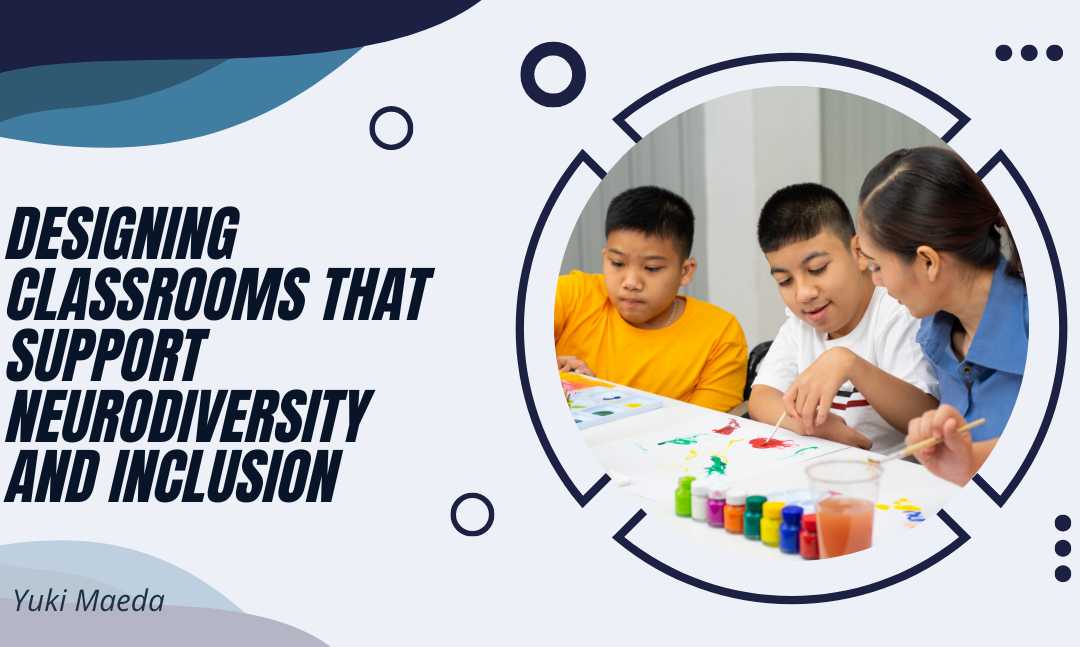As educational systems evolve to meet the diverse needs of all students, the importance of creating classrooms that support neurodiversity and inclusion has never been more evident. Neurodiversity refers to the natural variation in how human brains function, encompassing conditions such as autism, ADHD, dyslexia, Tourette’s syndrome, and more. Rather than viewing these as deficits, the neurodiversity movement recognizes them as differences that deserve understanding, accommodation, and respect. Inclusive classrooms, therefore, are not just spaces where students with disabilities are present—they are environments where every learner is valued, supported, and empowered to thrive.
Designing a neurodiverse and inclusive classroom begins with physical space. The classroom layout should be flexible, providing multiple seating options that cater to different learning preferences and sensory needs. For instance, standing desks, floor cushions, bean bags, and quiet corners can offer students choices in how and where they learn best. Some students may benefit from sensory tools such as fidget items, weighted blankets, or noise-canceling headphones. Offering these resources helps reduce anxiety and increases focus for students who may otherwise feel overwhelmed by a traditional classroom setup.
Lighting, sound, and visual stimuli also deserve thoughtful consideration. Natural lighting is preferred whenever possible, and fluorescent lights—which can be harsh or distracting—should be avoided or diffused. Minimizing background noise and providing acoustic support helps students with sensory sensitivities or auditory processing challenges concentrate better. Visual clutter, including excessive posters or decorations, can be overstimulating. Organized, calming visuals and clear signage support a more focused learning environment for all.
Another important aspect of an inclusive classroom is communication accessibility. Students with communication differences, such as those on the autism spectrum or with speech-language delays, may rely on augmentative and alternative communication (AAC) methods. Teachers should be trained to support these tools and integrate them naturally into the classroom setting. Visual schedules, picture exchange systems, and clear, consistent routines help all students—especially those who thrive on predictability—understand expectations and transitions.
Curriculum design in an inclusive classroom also reflects a commitment to universal design for learning (UDL). UDL is an educational framework that aims to give all students equal opportunities to learn by offering multiple means of engagement, representation, and expression. For example, a teacher might allow students to demonstrate their understanding of a science concept through a written report, a visual presentation, or a hands-on model. Providing options honors students’ strengths and allows them to access content in ways that are most meaningful to them.
Social inclusion is just as vital as academic support. Inclusive classrooms foster a sense of belonging by encouraging collaboration, empathy, and respect among students. This can be achieved through structured peer interactions such as buddy systems, cooperative learning groups, and inclusive extracurricular activities. These opportunities help build friendships, improve communication skills, and reduce stigma around neurodiversity. Teachers play a key role in modeling inclusive behavior, setting clear expectations for respect, and addressing bullying or exclusion promptly and constructively.
Professional development and teacher preparation are foundational to the success of inclusive classrooms. Educators must be equipped not only with knowledge about different neurodivergent conditions but also with practical strategies for classroom management, differentiated instruction, and emotional regulation. Training in trauma-informed practices and cultural sensitivity further enhances a teacher’s ability to meet the complex needs of a diverse student population.
Parental and community involvement also strengthens inclusion. Schools that foster open communication with families can better understand and support individual students. Inviting parents and caregivers to share their insights, participate in classroom activities, or collaborate on individualized plans encourages trust and ensures that educational strategies align with the student’s home environment. Involving community partners, such as therapists or advocacy groups, can also bring valuable resources and expertise into the classroom.
Lastly, inclusion is not just about accommodating neurodivergent learners—it benefits everyone. Research shows that inclusive classrooms promote empathy, adaptability, and critical thinking among all students. When children learn side by side with peers who think and learn differently, they gain a broader understanding of human diversity and develop skills that are essential in a global, interconnected world.
Creating classrooms that support neurodiversity and inclusion requires intention, flexibility, and a willingness to continuously learn and adapt. But the outcome is a richer, more equitable educational experience for every student. By celebrating differences and designing with all learners in mind, educators can build communities where every child feels seen, supported, and inspired to reach their full potential.

